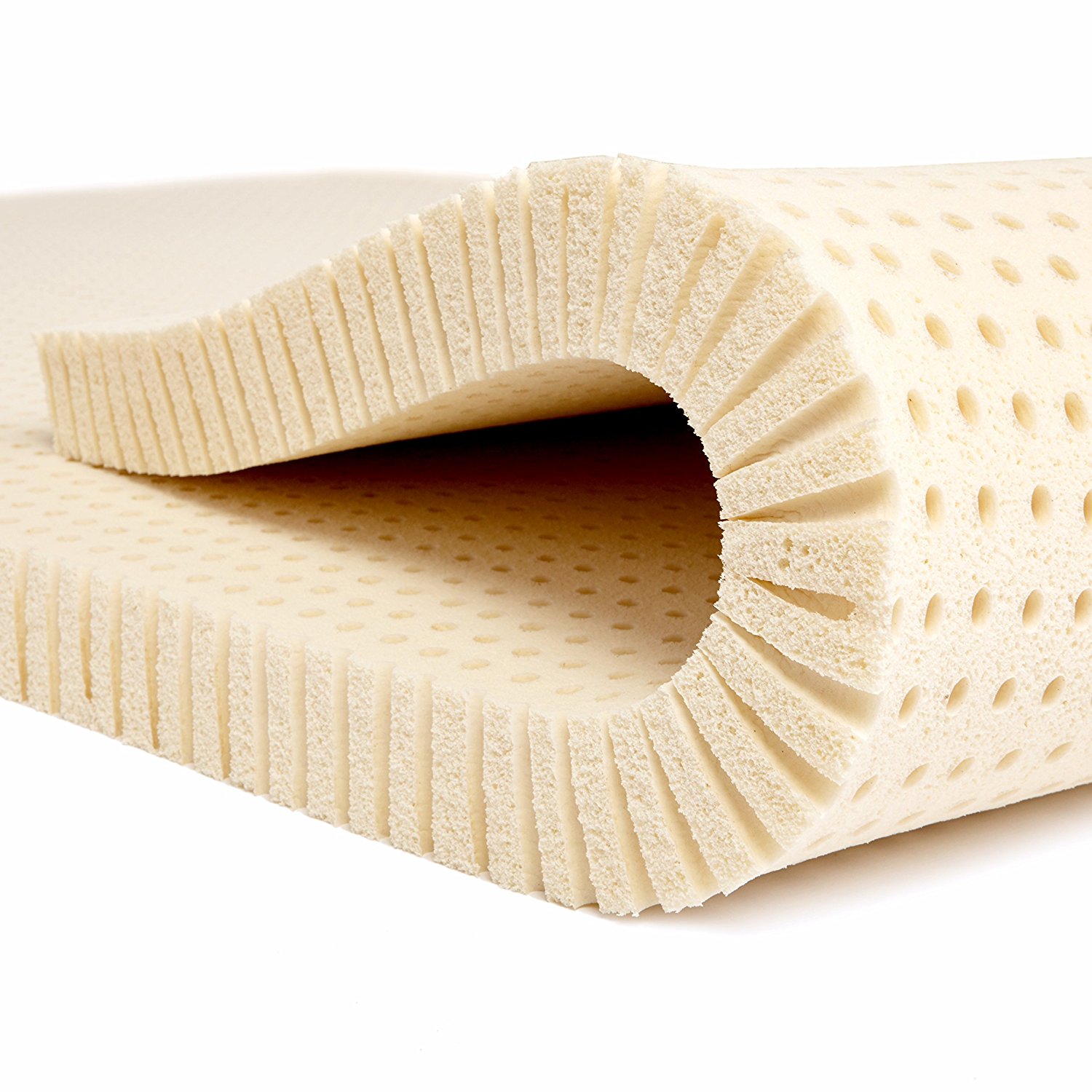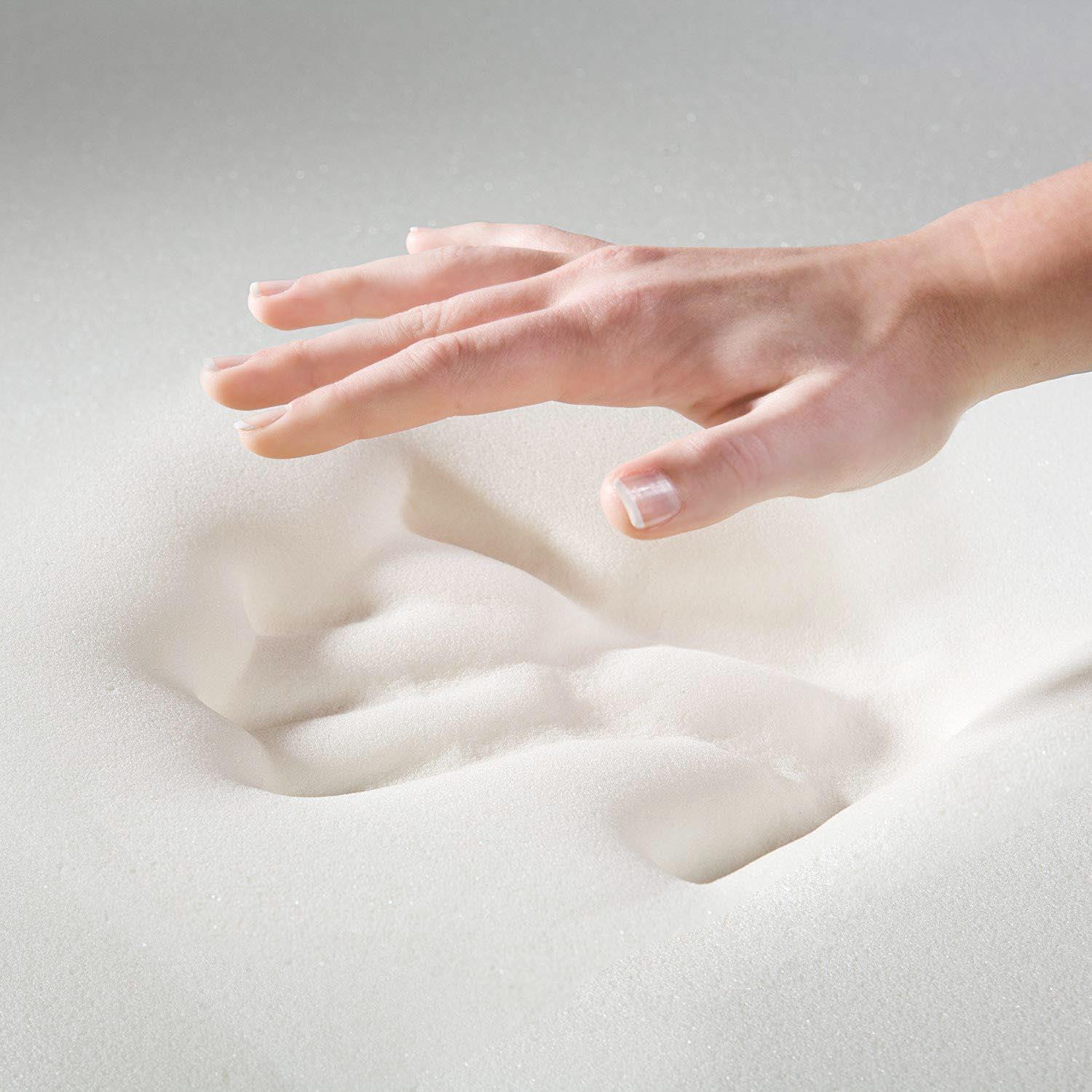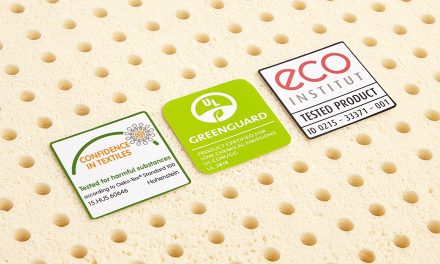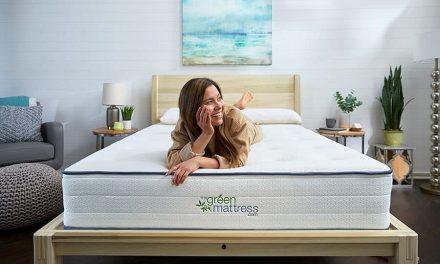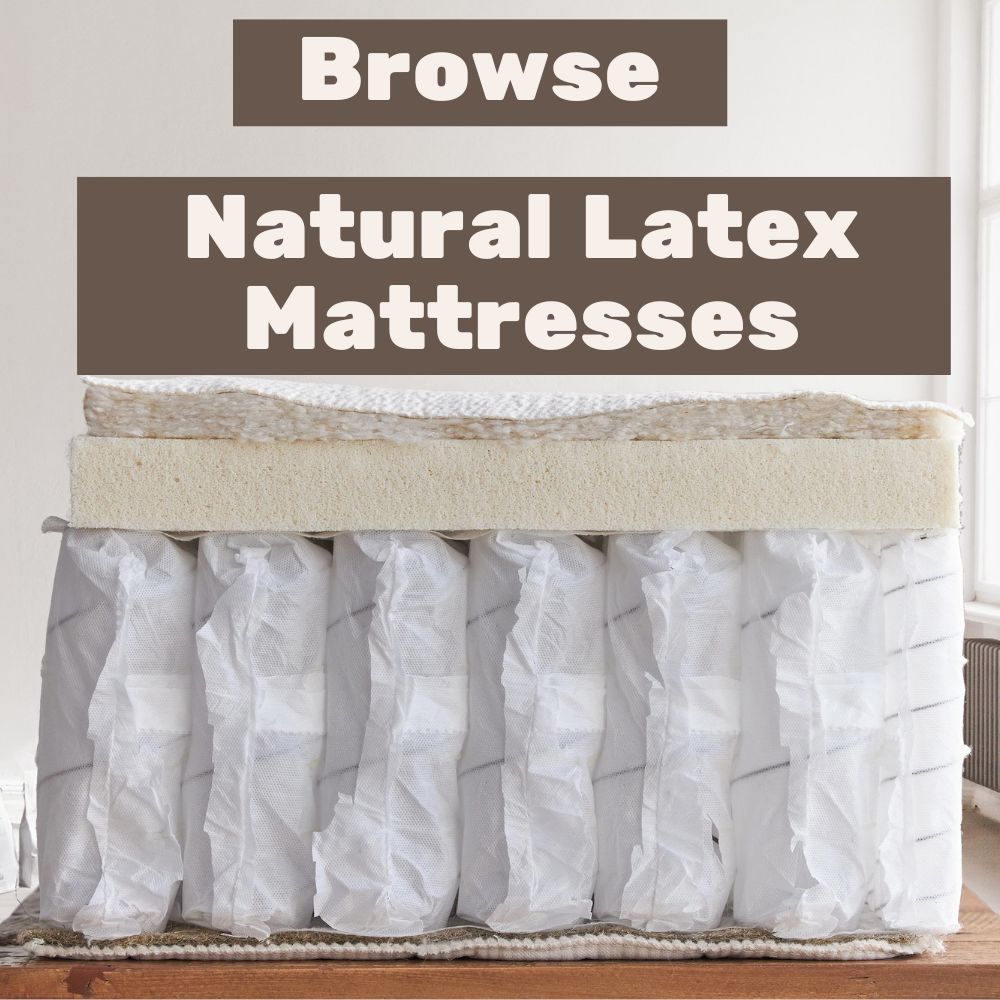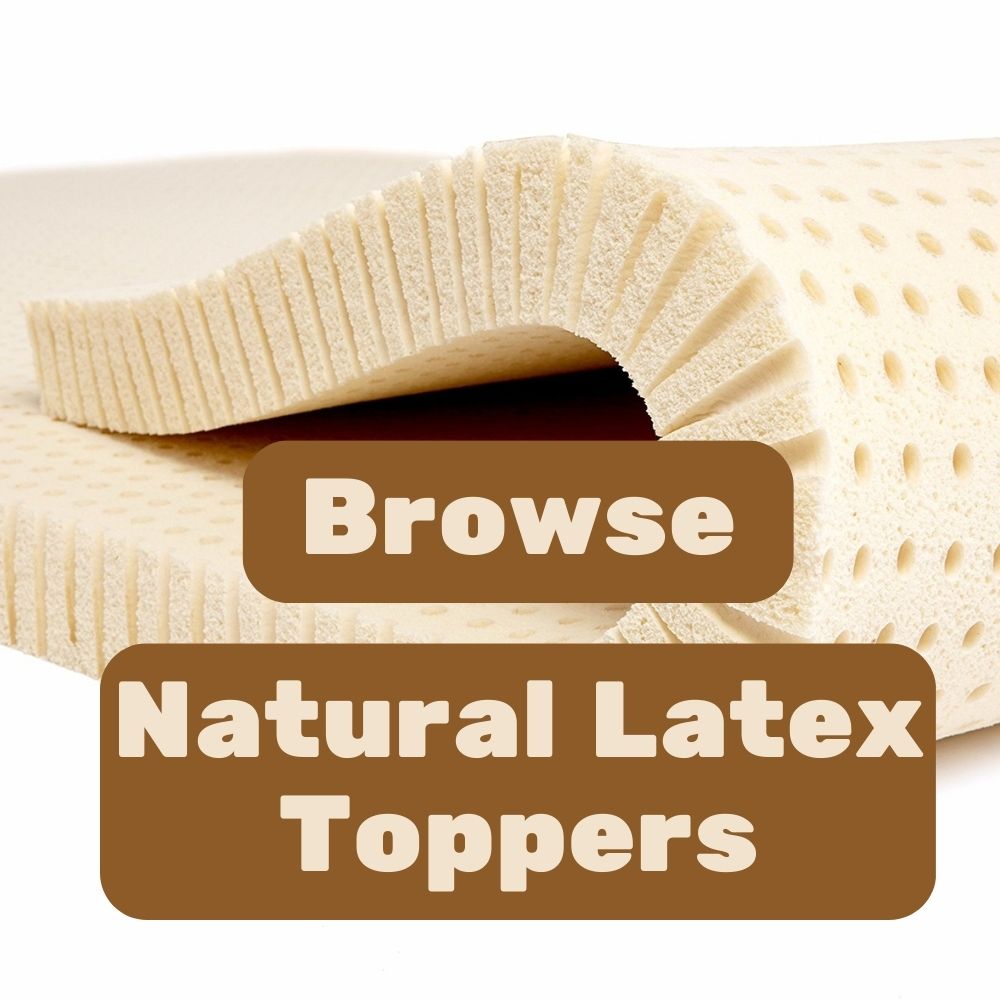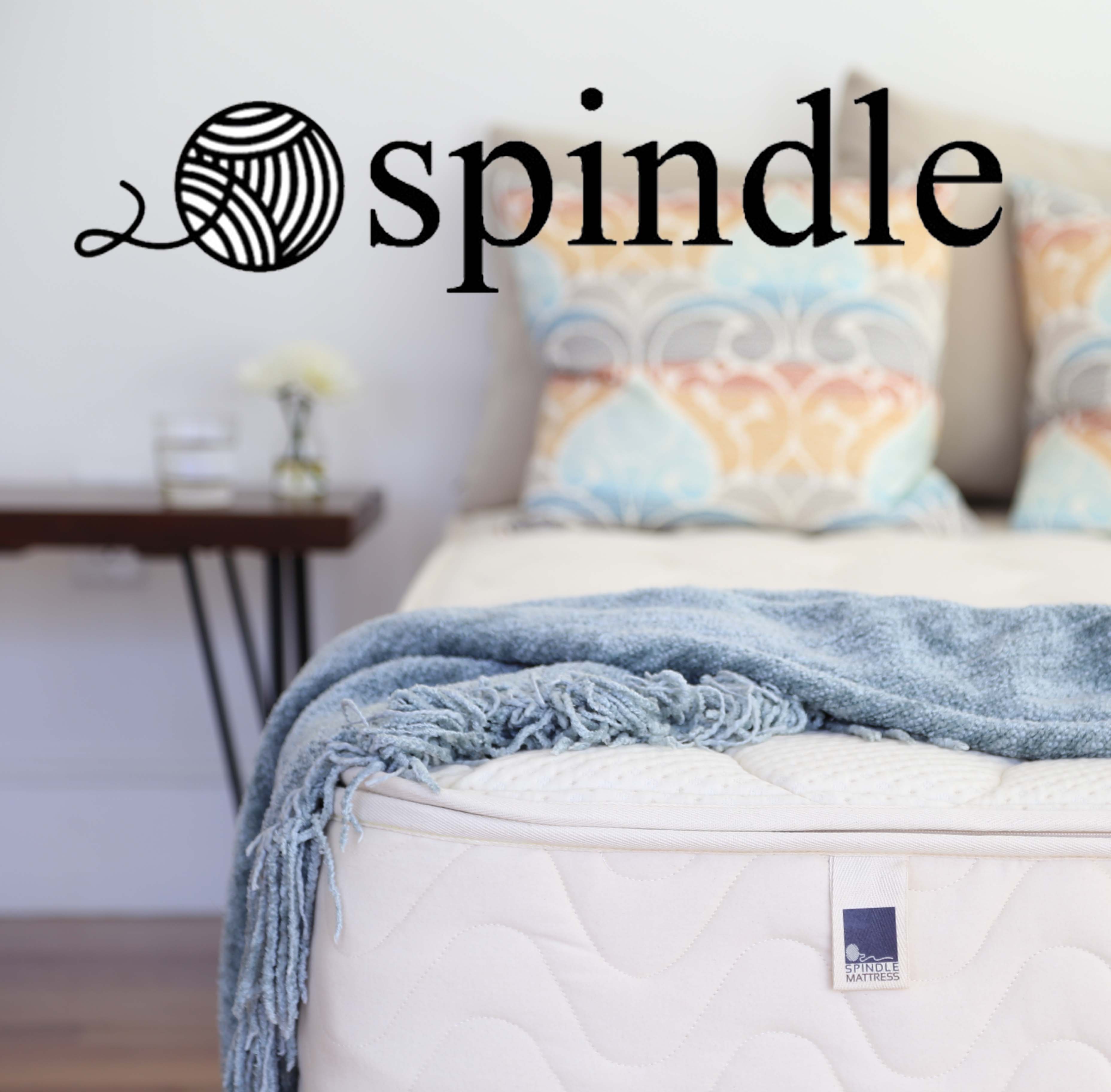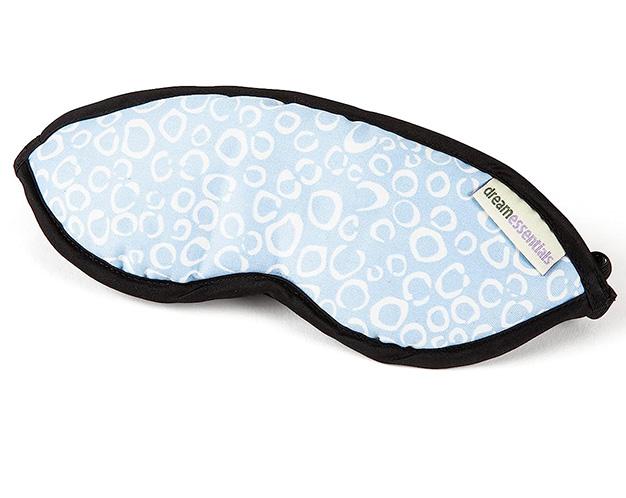Table of Contents
Dunlop latex vs memory foam: A comprehensive comparison
In recent years, the mattress industry has seen a surge in popularity for Dunlop latex and memory foam materials. These two types of foams offer distinct characteristics that cater to different preferences and needs, making it essential for consumers to understand their unique properties before purchasing.
Importance of understanding the differences between latex vs memory foam
Understanding the differences between Dunlop Latex Foam vs. Memory Foam is crucial when selecting a mattress. Each material offers specific advantages and drawbacks that can significantly impact one’s sleep quality, health, and overall satisfaction with their mattress choice.
Dunlop Latex Foam
Description and properties
- Natural and eco-friendly material Dunlop latex foam is an environmentally-friendly material made from the sap of rubber trees. As a sustainable resource, it has garnered attention from eco-conscious consumers who seek an all-natural, biodegradable alternative to synthetic foams.
- Derived from the sap of rubber trees The process of creating Dunlop latex foam involves extracting the sap from rubber trees, which is then whipped into a frothy mixture, poured into a mold, and baked to form a solid foam. This method results in a dense, durable, and supportive material.
Advantages
- Supportive and comfortable Dunlop latex foam is known for providing excellent support and comfort, with a natural springiness that evenly distributes weight and minimizes pressure points, leading to a more restful sleep.
- Hypoallergenic and antimicrobial Dunlop latex foam is inherently hypoallergenic and antimicrobial, making it a suitable choice for individuals with allergies or sensitivities to dust mites, mold, and mildew.
- Temperature regulation One of the notable benefits of Dunlop latex foam is its ability to regulate temperature, which helps prevent overheating during sleep. Its open-cell structure promotes air circulation, creating a cooler and more comfortable sleep environment.
- Durability and longevity Dunlop latex foam is highly durable and long-lasting, often outperforming memory foam in terms of lifespan. Its resilience and ability to retain its shape over time make it an attractive option for those seeking a long-term investment in their sleep quality.
- Super responsive: 100% natural latex foam is more responsive than memory foam. It adapts instantly to your body when you are changing sleeping positions. Memory foam is slow to react, giving you that sinking feeling when you switch positions.
- Consistent support: as I squeezed the Dunlop natural latex foam with my hand, I could feel constant resistance. In contrast, when fully compressed, the memory foam offered little resistance. This difference would mean that the memory foam offers little support after you have sunken into it.
- More bouncy: natural latex foam is much more bouncy and spongy than memory foam. The feel is completely different than memory foam. Many people report a feeling of buoyancy when trying a natural latex mattress out for the first time. You get the sensation that every curve of your body is supported equally.
Dunlop latex Certification and safety
- Global Organic Latex Standard (GOLS) certification The Global Organic Latex Standard (GOLS) certification ensures that Dunlop latex foam meets strict guidelines for organic production, processing, and manufacturing. This certification guarantees that the foam is made with a minimum of 95% certified organic raw material and adheres to rigorous environmental and social responsibility standards.
- Non-toxic and chemical-free composition Dunlop latex foam is considered a safe and non-toxic material, free from harmful chemicals commonly found in synthetic foams. This makes it appealing for those prioritizing health and safety in their bedding choices.
Memory Foam
Memory foam, a synthetic material derived from polyurethane, has gained popularity for its unique viscoelastic properties, which enable it to mold and conform to the shape of the sleeper’s body. These properties offer several advantages, such as pressure relief and body contouring, which can reduce discomfort caused by pressure points. Additionally, memory foam is excellent at motion isolation, making it an ideal choice for couples who want to minimize the disturbance caused by their partner’s movements during sleep.
However, memory foam also has its share of disadvantages. Due to its dense structure, it tends to retain heat, which can lead to an uncomfortable sleeping environment for some people. Moreover, memory foam is known to have off-gas volatile organic compounds (VOCs), such as formaldehyde, benzene, and methylene chloride, which can cause unpleasant odors and potential health concerns. Regarding durability, memory foam is generally less resilient than Dunlop latex foam, and its lifespan may be shorter. Furthermore, due to its petroleum-based composition, memory foam lacks organic certification and poses environmental concerns. Lastly, the slow responsiveness of memory foam means that some people may find the sinking feeling distracting, particularly when changing sleep positions.
Conclusion
Summary of the differences between Dunlop latex vs memory foam
In conclusion, Dunlop latex and memory foam are distinct materials with unique properties catering to different preferences and needs. Dunlop latex foam is a natural, eco-friendly, and durable option that provides excellent support, temperature regulation, and hypoallergenic benefits. On the other hand, memory foam is a synthetic material known for its pressure relief, body contouring, and motion isolation properties. Still, it has drawbacks such as heat retention, off-gassing, and environmental concerns.
Guidance for consumers in choosing the best latex mattress vs memory foam mattress
When selecting a mattress, it’s essential for consumers to carefully consider their preferences, sleep habits, and any health concerns. By understanding the differences between Dunlop latex vs memory foam, individuals can make an informed decision and choose the material that best suits their needs, ultimately leading to improved sleep quality and overall satisfaction.
FAQ Frequently Asked Questions about Dunlop Latex & Memory Foam
Does memory foam have fiberglass?
Memory foam itself does not contain fiberglass. However, some memory foam mattresses have a fiberglass-infused cover or layer known as a fire barrier or fire sock. This component meets federal flammability standards and prevents the mattress from catching fire. Fiberglass is often used in these fire barriers because it is non-flammable.
It is essential to note that if a mattress contains a fiberglass fire barrier, you should not remove or damage the cover. Removing the cover or exposing the fiberglass layer can release tiny glass particles into the air, which can cause skin irritation, respiratory issues, and other health problems. If you have concerns about fiberglass in your mattress, you should check the manufacturer’s information and opt for a mattress with an alternative fire barrier material.
Are memory foam mattresses toxic?
Memory foam mattresses can be associated with some health concerns due to the chemicals used in their production. The primary concern is off-gassing, which refers to releasing volatile organic compounds (VOCs) from the mattress. Some VOCs, such as formaldehyde, benzene, and methylene chloride, are known to be toxic and may cause allergic reactions, respiratory issues, and other health problems in sensitive individuals.
However, not all memory foam mattresses are created equal. Some manufacturers use low-VOC or CertiPUR-US certified foams, which have been independently tested and certified to have low emissions of harmful chemicals. These mattresses can be safer for consumers concerned about memory foam’s potential toxicity. Still, CertiPUR-US certification only means that the VOCs are below an arbitrary threshold set by memory foam manufacturers.
It is also worth noting that the off-gassing odor typically dissipates over time, especially if the mattress is aired out in a well-ventilated area for a few days after unpacking.
While some memory foam mattresses may contain potentially toxic chemicals, many manufacturers have tried to produce safer, low-VOC products. When shopping for a memory foam mattress, it is advisable to research and choose a product that has been independently tested and certified to ensure it meets safety standards.
Are memory foam mattresses good?
Memory foam mattresses can be an excellent choice for many people due to their unique properties and benefits. Some of the key advantages of memory foam mattresses include the following:
- Pressure relief: Memory foam contours to the shape of your body, distributing weight evenly and reducing pressure points. This can be especially beneficial for those who experience pain in their joints, back, or other areas.
- Body contouring: Memory foam provides personalized support by molding your body shape, which can help maintain proper spinal alignment and promote comfortable sleep.
- Motion isolation: Memory foam absorbs motion, meaning movement on one side of the bed is less likely to be felt on the other. This can be particularly useful for couples, as it minimizes disturbances caused by a partner’s movements during sleep.
- Noise reduction: Memory foam mattresses are virtually silent, providing a quiet sleep environment.
However, memory foam mattresses also have some drawbacks, such as:
- Heat retention: Memory foam can retain body heat, which may lead to an uncomfortable sleeping temperature for some people.
- Off-gassing: Some memory foam mattresses emit volatile organic compounds (VOCs) that can cause an initial unpleasant odor and, in some cases, allergic reactions or respiratory issues.
- Responsiveness: Memory foam’s slow responsiveness can make it difficult for some people to change positions during sleep, leading to a “sinking” feeling.
- Durability: Memory foam mattresses may not be as durable as other types, such as latex or innerspring mattresses, and may need to be replaced sooner.
In summary, memory foam mattresses can be a good option for many individuals, particularly those seeking pressure relief, body contouring, and motion isolation. However, it is essential to consider the potential drawbacks and choose a high-quality, low-VOC product to ensure a comfortable and safe sleep experience.
Are memory foam mattresses hot?
Memory foam mattresses are known for sleeping hot due to their dense structure, which can reduce airflow and cause heat retention. The contouring nature of memory foam, which envelops the body, can also contribute to a warmer sleep experience, as there is less room for air to circulate the body.
However, many manufacturers have recognized this issue and developed various solutions to address heat retention in memory foam mattresses. Some of these solutions include:
- Gel-infused memory foam: By infusing memory foam with cooling gel particles, manufacturers aim to reduce heat buildup and provide a cooler sleep surface.
- Open-cell memory foam: This type of memory foam has a more open-cell structure, which allows for better airflow and improved heat dissipation compared to traditional memory foam.
- Copper or graphite-infused memory foam: Both copper and graphite have natural heat-conducting properties. They can help draw heat away from the body when infused into memory foam.
- Breathable mattress covers: Some memory foam mattresses come with cotton, Tencel, or bamboo, which can help wick away moisture and promote better airflow.
It is important to note that individual experiences can vary, and what might feel hot to one person could be perfectly comfortable for another. If you are concerned about sleeping hot on a memory foam mattress, consider looking for options with cooling features or layering a breathable mattress topper to improve temperature regulation.
What is memory foam made of?
Memory foam is a type of polyurethane foam, which is a synthetic material derived from a combination of various chemicals. The exact composition of memory foam can vary depending on the manufacturer’s formulation. However, the main ingredients typically include:
- Polyols (40-60%): Polyols are a key component of memory foam, providing the base for the foam’s structure. They are organic compounds that react with isocyanates to form polyurethane foam. Polyols can be derived from petroleum or plant-based sources, with the latter being more environmentally friendly.
- Isocyanates (20-40%) are crucial ingredients in memory foam production. They react with polyols to create the foam structure. The most commonly used isocyanates in memory foam manufacturing are Toluene Diisocyanate (TDI) and Methylene Diphenyl Diisocyanate (MDI). MDI is considered less toxic and less prone to off-gassing compared to TDI.
- Water (10-20%): Water is used as a blowing agent in memory foam production, helping create the foam’s cellular structure. When water reacts with isocyanates, it produces carbon dioxide, which expands the foam structure.
- Catalysts, surfactants, and flame retardants (1-10%): These additional chemicals are used in small amounts to control the foam’s properties and ensure it meets safety standards. Catalysts speed up the chemical reaction between polyols and isocyanates, surfactants help create a uniform cell structure, and flame retardants make the foam more fire-resistant.
Please note that these percentages are approximate and can vary depending on the specific memory foam formulation used by the manufacturer. To improve the foam’s temperature regulation properties, some manufacturers may include other additives, such as cooling agents (e.g., gel, copper, or graphite).
Are memory foam mattresses good for your back?
For individuals with back pain or chronic discomfort, memory foam can relieve the body by cushioning and supporting its natural curves. This can be particularly beneficial for side sleepers, as it can help maintain the spine’s natural alignment while reducing pressure on the shoulders and hips.
However, it is essential to choose the right firmness level for your body type and sleeping position to ensure optimal spinal support:
- Side sleepers: A medium to medium-firm memory foam mattress is usually recommended, as it provides enough cushioning for the shoulders and hips while still maintaining proper spinal alignment.
- Back sleepers: A medium-firm to firm memory foam mattress is typically best, as it offers sufficient support to keep the spine in a neutral position without causing discomfort.
- Stomach sleepers: A firm memory foam mattress is advised, as it prevents the hips from sinking too deeply into the mattress, which can lead to lower back strain.
It is worth noting that individual preferences and needs can vary, so what might be comfortable and supportive for one person may not be ideal for another. If you have specific concerns about your back or spinal health, it is advisable to consult a medical professional for personalized recommendations.
How long does memory foam last?
The lifespan of a memory foam mattress can vary depending on the quality of the materials used, the density of the foam, and how well the mattress is maintained. On average, memory foam mattresses can last between 7 to 10 years before they show signs of wear and tear, such as sagging or loss of support.
Higher-quality memory foam mattresses, which typically have a higher density and are made from more durable materials, can sometimes last even longer—up to 15 years. However, lower-quality memory foam mattresses may have a shorter lifespan and must be replaced within 5 to 7 years.
To prolong the life of a memory foam mattress, it is essential to follow proper care and maintenance guidelines. This may include:
- Using a mattress protector to guard against spills, stains, and allergens.
- Rotating the mattress every few months to promote even wear.
- Ensuring proper support from a bed frame or foundation to prevent sagging.
- Keeping the mattress clean by vacuuming it regularly and spot cleaning as needed.
By taking good care of a memory foam mattress, you can help maximize its lifespan and maintain its comfort and support over time.
How memory foam is made?
Memory foam is a type of polyurethane foam that has viscoelastic properties, giving it the ability to contour to the body and provide pressure relief. The manufacturing process of memory foam involves several steps, during which various chemicals are combined to create the foam’s unique structure:
- Preparation of raw materials: The primary raw materials needed to make memory foam are polyols, isocyanates, water, and other additives like catalysts, surfactants, and flame retardants. These materials are measured and prepared according to the desired foam formulation.
- Mixing: The polyols and isocyanates are mixed together in a large mixing container, often using a high-speed mixer, to initiate the chemical reaction that will form the polyurethane foam.
- Adding water and other additives: Water and other additives, such as catalysts, surfactants, and flame retardants, are added to the mixture. The water acts as a blowing agent, reacting with the isocyanates to produce carbon dioxide gas, which helps create the foam’s cellular structure.
- Foaming: As the chemical reaction progresses, the mixture expands and forms a foam. This process is carefully monitored to ensure the foam develops the desired properties, such as density and viscosity.
- Rising and curing: The expanding foam is poured onto a conveyor belt or into a mold and allowed to rise and cure. During this stage, the foam’s cell structure solidifies, and the material develops its characteristic viscoelastic properties.
- Cutting and shaping: Once the memory foam has fully cured, it is cut into sheets or molded into specific shapes, depending on the intended use (e.g., mattress layers, pillows, or toppers).
- Quality control and testing: The finished memory foam products are inspected for quality and tested to meet performance and safety standards. This may include checking for consistency in density, firmness, and resilience and evaluating the foam’s resistance to wear and tear.
- Packaging and shipping: Memory foam products are packaged and shipped to retailers or customers.
It is important to note that the exact process and materials used in memory foam manufacturing can vary depending on the specific formulation and the manufacturer’s techniques. Some manufacturers may also incorporate additional features, such as cooling agents (e.g., gel, copper, or graphite), to enhance the foam’s performance.
Who invented memory foam?
Memory foam was invented in the mid-1960s by a team of researchers led by Charles Yost, an aeronautical engineer, and Chiharu Kubokawa, a chemist, under a contract with NASA’s Ames Research Center. The goal was to develop a material that could improve the safety and comfort of aircraft seats by better absorbing and distributing the impact forces experienced during landings and crashes.
The resulting material, originally known as “temper foam” or “slow springback foam,” was an open-cell, viscoelastic polyurethane foam that could conform to the shape of an object and slowly return to its original form once the pressure was removed. This innovative material provided both cushioning and support, making it an ideal solution for the intended aerospace applications.
Over time, memory foam found its way into various consumer products, most notably mattresses, mattress toppers, and pillows, due to its unique pressure-relieving and body-contouring properties. Today, memory foam is a popular choice for sleep products and continues to evolve with new formulations and technologies to enhance its performance and comfort.
Does latex foam smell?
Latex foam can sometimes have a slight smell when it is new, but the intensity and duration of the smell can vary depending on the type and quality of latex used. Natural latex foam is made from the sap of rubber trees and may initially emit a mild, rubbery odor. This smell typically dissipates over time, especially if the latex foam is well-ventilated.
Synthetic latex, made from petrochemicals, can sometimes produce a stronger odor. This smell also dissipates over time, but it may take longer than natural latex. Blended latex, a mix of natural and synthetic materials, might have a smell that falls somewhere between the two.
Suppose you’re concerned about the smell of latex foam. In that case, it’s a good idea to look for products certified by organizations like Oeko-Tex, or the Global Organic Latex Standard (GOLS), which ensure that the materials used are of high quality and have low levels of volatile organic compounds (VOCs). The smell from latex foam is generally not harmful, but some people might be more sensitive to it. Allowing the foam to air out for a few days in a well-ventilated area should help reduce or eliminate any lingering odors.
How long does latex foam last?
High-quality natural latex foam can sometimes last 10 to 20 years or even longer. Natural latex is more resilient and durable than synthetic or blended latex, which can have a shorter lifespan. Synthetic and blended latex foams can last around 5 to 15 years, depending on their composition and quality.
To prolong the life of your latex foam, follow these general guidelines:
- Use a proper foundation or support for the foam, such as a slatted bed frame or platform, to ensure even weight distribution and adequate airflow.
- Rotate or flip the foam regularly (if it’s double-sided) to promote even wear and prevent body impressions or sagging.
- Protect the foam from moisture and spills using a waterproof cover or mattress protector.
- Keep the foam clean by vacuuming it periodically and spot-cleaning any stains with a mild soap and water solution.
- Ensure proper ventilation in your sleeping area to prevent mold or mildew buildup.
Following these guidelines can help ensure that your latex foam remains comfortable and supportive for many years.
Is latex foam natural?
Latex foam can be natural, synthetic, or a blend of both, depending on its composition.
Natural latex foam is derived from the sap of rubber trees (Hevea brasiliensis). The sap is harvested and then processed using the Dunlop or Talalay method to create foam. Natural latex foam is eco-friendly, biodegradable, and generally considered to be more durable and resilient than synthetic or blended latex.
Synthetic latex foam is made from petrochemicals, such as styrene-butadiene rubber (SBR). It is designed to mimic the properties of natural latex, but it is not derived from natural sources. Synthetic latex is often less expensive but may not offer the same durability or resilience as natural latex.
Blended latex foam is a combination of natural and synthetic latex. Manufacturers often blend the two materials to achieve specific properties or to reduce costs. The quality and characteristics of blended latex foam can vary depending on the ratio of natural to synthetic latex used.
When shopping for latex foam products, look for certifications like the Global Organic Latex Standard (GOLS) to ensure that the product is made from natural latex and adheres to specific environmental and social criteria.
Does latex foam off gas?
Natural latex foam can emit a mild, rubbery odor when it’s new. Still, the off-gassing is generally minimal compared to synthetic or petroleum-based foams, such as memory foam or some types of synthetic latex. Off-gassing refers to releasing volatile organic compounds (VOCs) into the air, which can cause odors and, in some cases, adverse health effects.
The off-gassing from natural latex foam is not harmful, and the smell usually dissipates over time, especially when the foam is well-ventilated. It is important to note that individual sensitivities to odors can vary, and some people might be more sensitive to the smell than others.
If you’re concerned about off-gassing, look for latex foam products certified by reputable organizations like Oeko-Tex or the Global Organic Latex Standard (GOLS). These certifications ensure that the materials used have low VOC levels and meet specific environmental and health standards.
Allowing the latex foam to air out in a well-ventilated area for a few days before use can help reduce any lingering odors and speed up the off-gassing process.
Does latex foam compress over time? Does latex foam sag?
The likelihood of sagging can be influenced by several factors, including the quality of the latex, the thickness and density of the foam, and how it’s cared for. To minimize the risk of sagging in your natural latex foam, follow these general guidelines:
- Use a proper foundation or support for the foam, such as a slatted bed frame or platform, to ensure even weight distribution and adequate airflow.
- Rotate or flip the foam regularly (if it’s double-sided) to promote even wear and prevent body impressions or sagging.
How latex foam is made?
Natural latex foam is made from the sap of rubber trees (Hevea brasiliensis). Production involves several steps: sap collection, processing, and curing. Two main methods for processing natural latex into foam are the Dunlop and the Talalay methods.
- Sap collection: Rubber tree sap, also called latex, is harvested by making a shallow incision into the tree’s bark and allowing the sap to drip into a collection cup. The process is similar to tapping maple trees for syrup. The collected sap is then filtered and possibly mixed with some additives to help with the foaming process.
- Dunlop method:a. The filtered sap is poured into a mold, which may have pins or rods to help create a consistent structure for the foam. b. The mold is covered, and the latex is allowed to settle and gel. Air is introduced to the mixture during this time, creating a foam-like texture. c. The mold is then heated to vulcanize the latex, solidifying and stabilizing the foam by forming cross-links between the rubber molecules. d. After the latex is fully cured, it’s removed from the mold, washed, and dried.
- Talalay method:Like the Dunlop method, the filtered sap is poured into a mold. However, the mold is only partially filled. b. The mold is then sealed, and a vacuum is applied to evenly distribute the latex throughout the mold and create a more uniform structure. c. The flash-frozen mold sets the foam and creates a more consistent cell structure. This process also prevents the particles from settling, resulting in a more even distribution of materials. d. The latex is then heated to vulcanize it, solidifying and stabilizing the foam. e. After curing, the latex foam is removed from the mold, washed, and dried.
The final latex foam product can be used in various applications, including mattresses, pillows, and cushions. Natural latex foam is known for its durability, resilience, and eco-friendly properties. The choice between Dunlop and Talalay latex foams depends on personal preference, as each method produces a slightly different feel and firmness. Dunlop latex tends to be denser and firmer, while Talalay latex is often softer and more consistent in texture.
What is Talalay latex foam?
Talalay latex foam is a type of natural latex foam made using the Talalay process, which involves vacuum-sealing, flash-freezing, and heating the latex in a mold to create a more uniform and consistent cell structure. This results in a softer, more consistent feel than Dunlop latex foam.
The basic raw material for Talalay latex foam is a natural latex derived from the sap of rubber trees. However, some chemicals are necessary for the manufacturing process. These chemicals may include:
- Vulcanizing agents promote cross-linking between the rubber molecules, stabilizing and solidifying the foam. Sulfur is a common vulcanizing agent.
- Accelerators: These chemicals speed up the vulcanization process. Examples include zinc oxide and diphenyl guanidine.
- Foaming agents: This helps to create a consistent foam structure by introducing air into the liquid latex. Sodium silicofluoride is an example of a foaming agent.
- Gelling agents: These chemicals help the liquid latex gel and set before vulcanization. Potassium oleate is one example of a gelling agent.
- Other additives: Additional chemicals may be used to modify the properties of the latex foam, such as antioxidants, which protect the latex from oxidation and degradation, and fillers to adjust the foam’s density or firmness.
The Talalay process typically requires more steps and chemicals than the Dunlop process, mainly due to the vacuum sealing and flash-freezing steps. The Dunlop process is simpler and more energy-efficient but tends to produce denser and less consistent foam.
It’s important to note that the specific ingredients and percentages used in the Talalay latex foam manufacturing process can vary between manufacturers and products. The main ingredients that are commonly used in the production of Talalay latex foam are:
- Natural latex is the primary ingredient and typically accounts for 85-95% of the total composition. Natural latex is derived from the sap of rubber trees (Hevea brasiliensis) and serves as the base material for the foam.
- Vulcanizing agents (1-5%): These chemicals, such as sulfur, promote cross-linking between the rubber molecules, stabilizing and solidifying the foam.
- Accelerators (1-3%): These chemicals, including zinc oxide and diphenyl guanidine, speed up the vulcanization process.
- Foaming agents (<1%): These chemicals, such as sodium silicofluoride, help create a consistent foam structure by introducing air into the liquid latex.
- Gelling agents (<1%): These chemicals, like potassium oleate, help the liquid latex gel and set before vulcanization.
- Other additives (<1%): Additional chemicals, such as antioxidants and fillers, may be used to modify the properties of the latex foam, protect it from oxidation and degradation, or adjust the foam’s density or firmness.
Remember that these percentages are approximate and can vary depending on the manufacturer’s specific formulation. It’s always a good idea to check for certifications from reputable organizations like Oeko-Tex or the Global Organic Latex Standard (GOLS) when purchasing Talalay latex foam products to ensure that they meet specific environmental, health, and safety standards.
How latex mattress is made?
A natural latex mattress is made using natural latex foam derived from the sap of rubber trees (Hevea brasiliensis). Making a natural latex mattress generally involves producing the latex foam layers, cutting and assembling the foam layers, and adding a cover. Here’s an overview of the process:
- Producing latex foam layers: Natural latex foam is created using the Dunlop or Talalay method, as previously described. Both methods involve collecting sap from rubber trees, processing the sap into foam, and curing the foam to create a stable, resilient material.
- Cutting foam layers: After the latex foam has been produced, it is cut into sheets or layers according to the desired thickness and firmness for the mattress. A natural latex mattress can consist of single or multiple layers, depending on the manufacturer’s design and the desired level of comfort and support.
- Assembling the foam layers: The foam layers are then assembled to create the mattress’s core. Different firmness levels can be combined in multi-layered designs to provide customized support and comfort. The layers may be glued together or stacked and held in place by the mattress cover.
- Adding a cover: The assembled latex foam core is then encased in a cover made from various materials such as cotton, wool, or other natural or synthetic fabrics. The cover not only protects the latex foam but also contributes to the overall comfort and breathability of the mattress.
- Optional additional layers: Some natural latex mattresses may include additional layers, such as wool or cotton batting, for added comfort or a fire barrier layer to meet flammability requirements. These layers are typically placed between the latex core and the cover.
When shopping for a natural latex mattress, look for certifications like the Global Organic Latex Standard (GOLS) or Oeko-Tex to ensure that the product is made from natural latex and adheres to specific environmental and social criteria. These certifications can also ensure the mattress has low volatile organic compounds (VOCs) and meets health and safety standards.
Which is better, Dunlop or Talalay latex?
Both Dunlop and Talalay latex have unique characteristics, and their choice largely depends on personal preference and individual needs. Here’s a comparison of their properties to help you decide which one might be better for you:
- Feel and Firmness:
- Dunlop latex is denser and firmer, with a more supportive feel. It offers progressive firmness, making it firmer as more pressure is applied. This makes it a good choice for those who prefer a firmer, more supportive sleeping surface or those with specific back or joint issues.
- Talalay latex is generally softer and has a more consistent feel throughout the material. It offers a more pillowy, plush sleeping surface and is suitable for those who prefer a softer, more pressure-relieving mattress.
- Consistency:
- Dunlop latex can have some inconsistencies due to the settling of particles during the manufacturing process. However, this doesn’t significantly affect the overall performance of the mattress.
- Talalay latex has a more consistent and uniform cell structure due to the vacuum-sealing and flash-freezing steps in the manufacturing process. This results in a more even distribution of support and comfort.
- Durability:
- Both Dunlop and Talalay latex are known for their durability and resilience. However, Dunlop latex is often considered slightly more durable due to its denser structure.
- Talalay latex is also quite durable, but its softer and more consistent structure may show signs of wear slightly earlier than Dunlop latex.
- Eco-friendliness:
- Dunlop latex is more eco-friendly, requiring fewer resources and energy than the Talalay process.
- The Talalay process involves additional steps, such as vacuum-sealing and flash-freezing, which require more energy and resources, making it less eco-friendly than the Dunlop process.
Ultimately, the choice between Dunlop and Talalay latex depends on your preferences, comfort needs, and budget. Both types of latex offer excellent support, pressure relief, and durability, but they differ in terms of feel, firmness, and eco-friendliness. It’s a good idea to try out both types of latex mattresses in person, if possible, to determine which one feels more comfortable and suits your individual needs.

